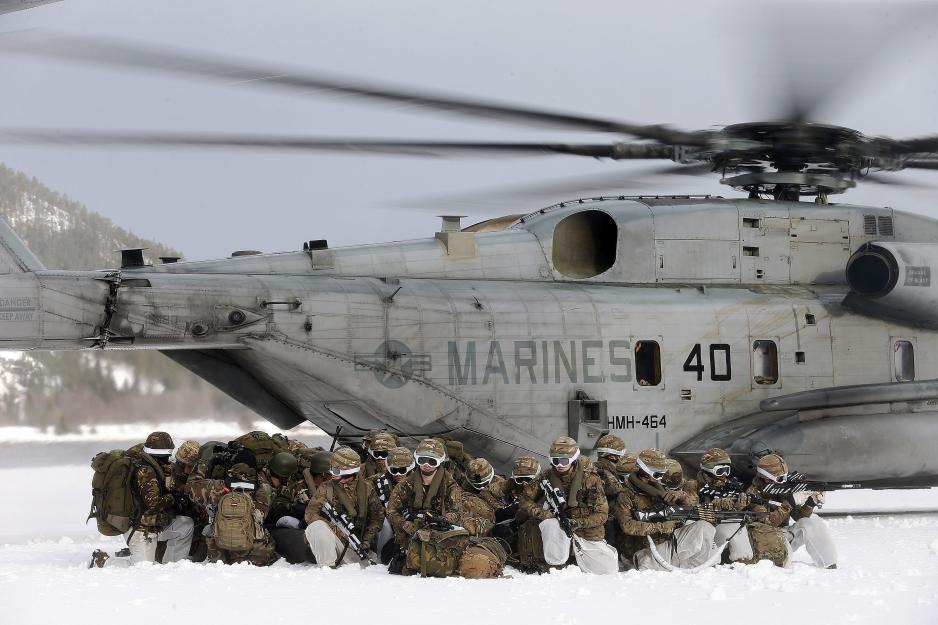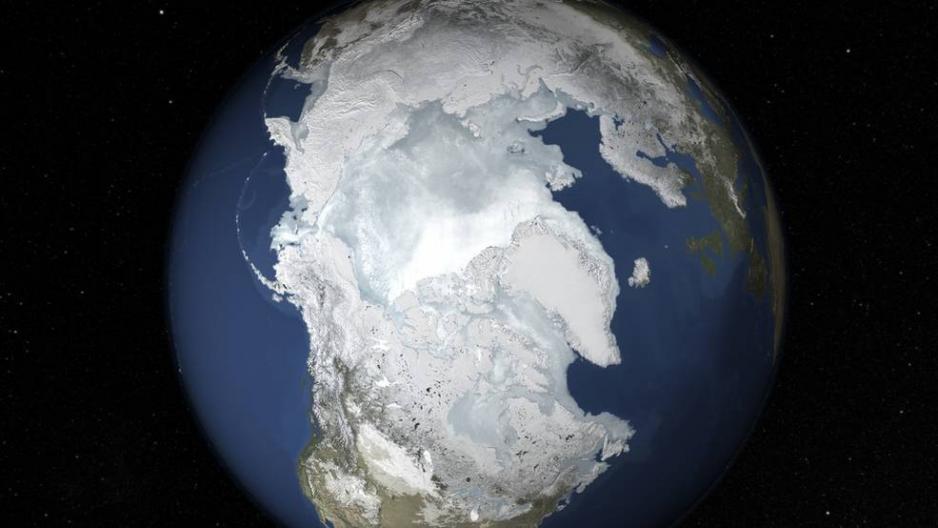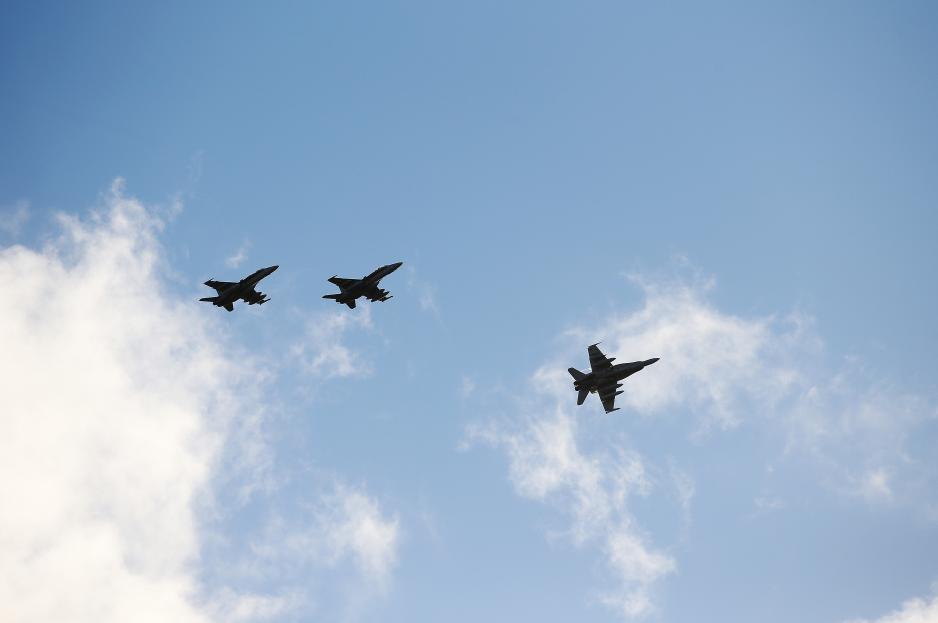Why Norway And the US Have Different Approaches Towards Their Arctic Regions

US Marines exercising in North Norway (Source: Torbjørn Kjosvold/Norwegian Armed Forces). // Amerikanske marinesoldater øver i Nord-Norge. (Foto: Torbjørn Kjosvold/Forsvaret)
Whereas the High North has become an integral part of foreign and security policy in Norway, the Arctic has remained in the peripheries of American foreign policy and security thinking since the end of the Cold War. Why?
This is an opinion piece. All views expressed are the writer's own.
In the talk about the emerging geopolitical importance of the Arctic, one may get the impression of the Arctic as being a monolithic region. Contrary though, as recent debates in the US and budget allocations in Norway exemplify, the level of attention given towards the region varies across the eight countries that define themselves as Arctic.
The Arctic – priority for some, periphery for others
In light of the changes occurring in the Arctic, it is noteworthy that the United States has yet to catch up with countries such as Norway or Russia in terms of focusing on the world’s northernmost territory. The United States is an Arctic country by virtue of the state of Alaska where parts of the territory and adjacent waters lie north of the Arctic Circle. However, while the U.S. has capabilities to operate militarily around the world, it has not chosen to focus its attention or capabilities towards the Arctic in the same manner as we see for instance in Norway (or Russia).
While competing with many of the other foreign and security issues that the U.S. has, this lack of Arctic focus has caused concerns. During a hearing of the Senate Armed Service Committee, U.S. Army General Curtis M. Scaparrotti, Commander of European Command and Supreme Allied Commander, said that the United States is not keeping pace with Russia, for instance in terms of the ability to exercise freedom of navigation operations in the Arctic. Whereas Russia has around 40 operational icebreakers, the U.S. has yet to change the fact that its only icebreaker capable of operating in its Arctic domain is over 30 years old. U.S. Defense Secretary Jim Mattis has commented that an increased coast guard presence would be a step “to up its game in the Arctic.”

Map of Alaska in relation to the US. (Source: Wikimedia) // Kart over Alaska sett i forhold til USA. (Kilde: Wikimedia)
In Norway on the other hand, a highly modernized Navy and several Coast Guard vessels operate and contribute to presence in the north on a daily basis. The recently published Norwegian national budget is also in line with Norway’s focus on having a high focus and presence in the High North, with suggestions of allocating more resources to the Norwegian military, particularly the Navy, investing in new maritime patrol airplanes as well as new coast guard vessels which will have a high presence in the Norwegian Arctic.
Different realities
While in fact having increased its focus towards the Arctic region in the past decade, shown through national directives issued under former Presidents George W. Bush and Barack Obama, as well as through an Arctic Roadmap issued by the United States Navy, one may characterize the role of the Arctic in the United States foreign and security thinking as minor.
Looking at the different realities in the various parts of the Arctic provides one understanding of why this focus is lacking. As indicated, there exists major differences between the various parts of the region, and in comparing what drives attention towards the north, it’s beneficial to keep in mind just how different the various parts of the region are.
Exemplifying the different realities is particularly seen in the cases of the U.S. and Norwegian Arctic. Of the 8 Arctic countries with territory north of the Arctic circle, Norway distinguishes itself as an engaged Arctic actor. One-third of the Norwegian landmass lies in the Arctic and close to 500,000 people, 10 % of the total Norwegian population, live here. Its northern ocean and its resources have been crucial for livelihood in the northern parts of the country for centuries - and oil, gas, fish and other maritime resources will continue to play significant roles for Norway in the foreseeable future. The importance of its huge maritime domain, the exclusive economic zone in which these resources are found, and which are so important for the Norwegian economy, contribute to influence Norwegian policy and thereby presence in the North.
Greater absence of infrastructure
In the U.S. case, only a few thousand people live in northern parts of Alaska, north of where the Arctic Circle cuts through the state. And while fisheries are important in this region, there are currently no offshore oil and gas development ongoing in U.S Arctic waters. While the Arctic is connected to Norwegians through history and polar expeditions, it is also highly connected to Norwegians in terms of fairly good communications and infrastructure. The North American Arctic has been left less developed in terms of infrastructure and resource developments than its European counterpart.
The environmental reality in this part of the Arctic help explain why. While the North American Arctic lies in a harsher, colder, and a more challenging and ice-infested environment, the Gulf Stream has made the Norwegian and North-West Russian Arctic more ice free and maneuverable. Climatic conditions and distances as well as greater absence of infrastructure leaves northern Alaska as a remote wilderness to many.
These geographical factors influence political attention towards the region, as does economic and strategic calculations following from having resources or population in the area.

Maximum Arctic Sea Ice in 2016, highlighting the differences in climate between North Norway and Alaska. (Source: NASA.) // Nivået for maksimal sjøis i Arktis i 2016 understreker klimaforskjellene mellom Nord-Norge og Alaska. (Kilde: NASA)
Security Concerns
On the international level, different security dynamics take place in the North American Arctic than compared to the European part. The U.S. borders Canada in the north, an important trading partner, friend and an ally in NATO. Both participate in the North American Aerospace Defend Command (NORAD) in which Alaska is a central region. Hard security challenges in the U.S. Arctic may seem to be of less urgency here.
Norway’s security policy focus towards the north is on the other hand influenced by what Russia does in the region - and elsewhere. As Northern Norway borders the Kola Peninsula, home of Russia’s Northern Fleet, Russia has and will be a constant factor in Norwegian foreign policy (even though Russian military activity in the north is not viewed as directed at Norway).
However, increased Russian military activity in its Arctic area along with the annexation in Crimea in 2014 have contributed to change the security situation in the north. The ice-free seas in the European Arctic provide the Northern Fleet with crucial access to the Atlantic. In this part of the Arctic region, Norway is NATO in the High North. Arctic Norwegian mainland and belonging maritime areas still lies between two former rivals, also shaping the security dynamics taking place and making Northern Norway important.
Arctic Exercises and NATO
This month, Norway will be hosting military personnel and equipment from around 30 countries in this year’s NATO military exercise Trident Juncture. At the same time as the exercise unfolds in the southern parts of Norway, Marines from the U.S. Marine Corps will also be stationed in Northern Norway, exercising along with the Norwegian military. According to the Norwegian national broadcaster, NRK, 350 American soldiers will be stationed in Troms for the next five years. While not part of the NATO exercise, many of the U.S. Marines stationed in Norway on a rotational basis will receive valuable training in the Norwegian Arctic environment.
In an interview with the Norwegian Broadcaster TV2, U.S. Army General Curtis M. Scaparrotti, Commander of European Command and Supreme Allied Commander, commented the following with regards to the NATO exercise:
We do see it as an important exercise, a critical one. We couldn’t go any place else and get the training expertise that we get from Norway, working with your forces here. And we hope that you learn from us a bit too, but you’re the experts in the High North and that’s why we come.
While the stationing of U.S. Marines in Norway and Trident Juncture not necessarily are linked, they both can partly be seen in light of the increasing strategic importance of the Arctic, and the geostrategic position that Norway has in the region.
While the U.S. might increasingly be looking towards the North Atlantic, exemplified through U.S. Marines and contributions to Trident Juncture such as sending the aircraft carrier USS Harry S. Truman, the same strategic importance of the North American counterpart, particularly the U.S. Arctic has yet to compare.

Three American F/A-18 Hornet over Ørland Air Station during exercise Trident Juncture 2018 in Norway. (Source: Torbjørn Kjosvold/Forsvaret). // Tre amerikanske F/A-18 Hornet-fly over Ørlandet flyplass under øvelsen Trident Juncture 2018 i Norge. (Foto: Torbjørn Kjosvold/Forsvaret).
Learning from Differences?
At the moment, talking about the emerging geopolitical importance of the Arctic may seem to make more sense when addressing the European part of the region. Much of what happens on the economic and security front, happens here, and recently, U.S. presence in the area has become more noticeable. In the context of the different realities in the Arctic, it is perhaps not so noteworthy that the U.S. Arctic is not being prioritized.
This, however, does not mean that the U.S. should neglect its Arctic area. Eventual implications of climate change might sooner or later make the North American Arctic look more similar to its counterpart. In the meantime, the different history of engagement and interest towards the High North on Norwegian behalf; long-standing activities and policies on a variety of issues, may be something that the U.S. can learn from in its approach to its north.
This article is based on a larger research project by Hilde-Gunn Bye, which can be found here.
Hilde-Gunn Bye, Bjørknes University College, Andreas Østhagen, Fridtjof Nansen Institute.


